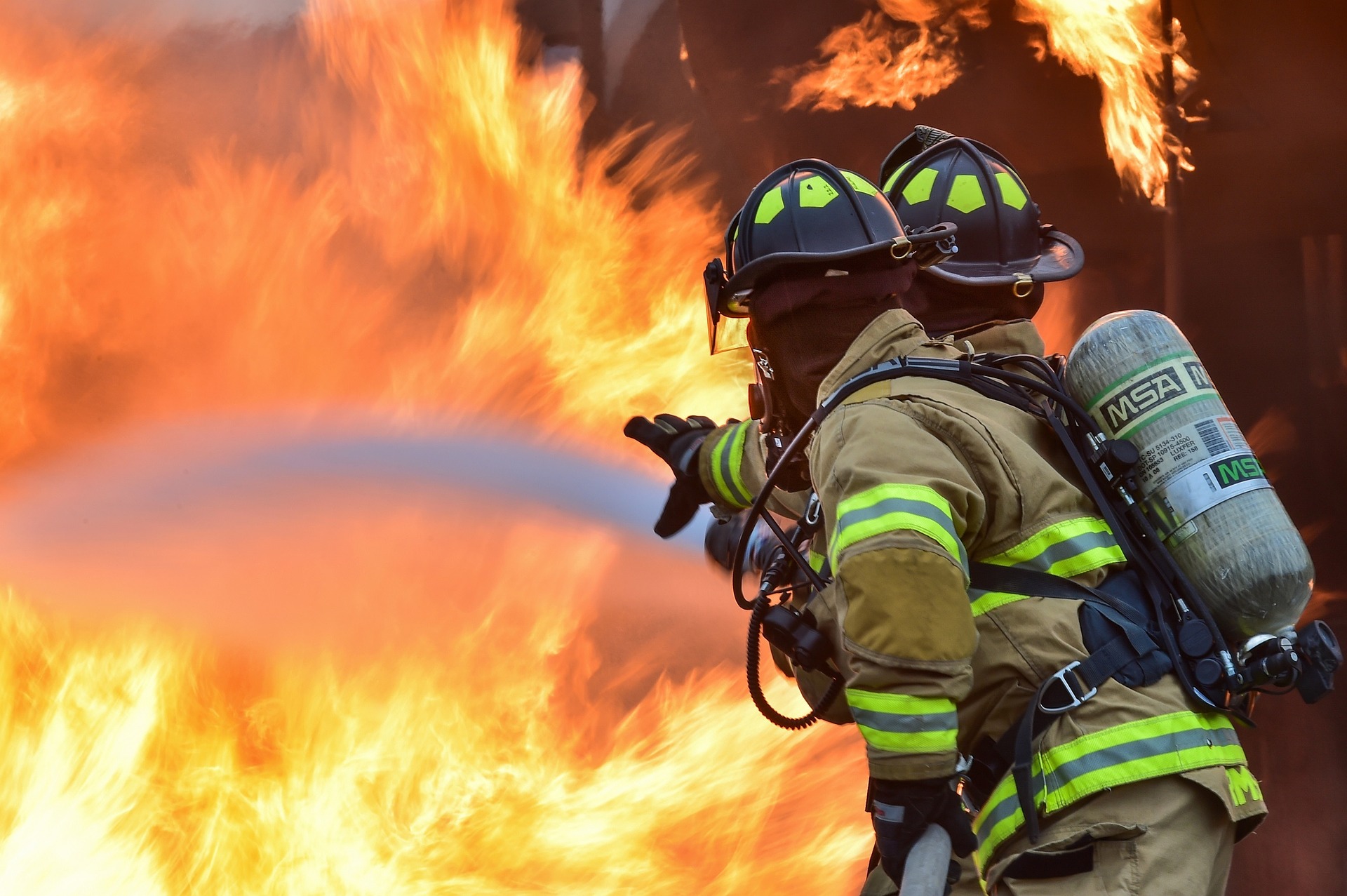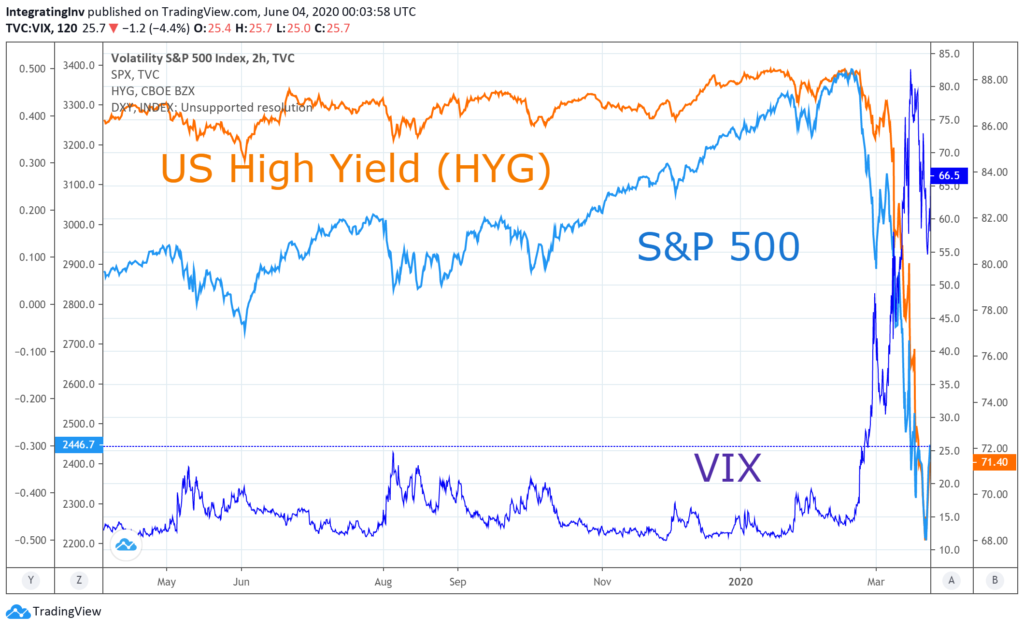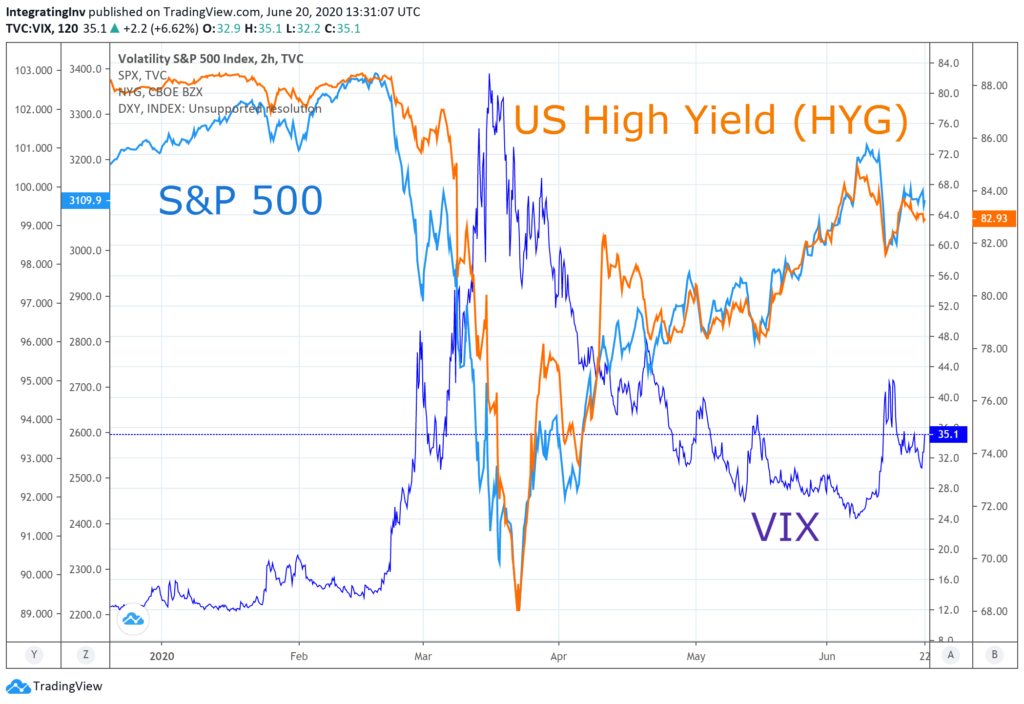
2020 is certainly not shaping up to be the year I had hoped for. Like many, I was optimistic at the start. I underwent some major surgery late last year and 2020 was going to be “my year.” Boy did those plans derail quickly. In the blink of an eye, the coronavirus (COVID) escalated from a mystery-meat sideshow to a full-blown economic crisis. Suddenly, we investors faced the realities of investing during an emergency. However, you’d hardly know it by the look of today’s markets. Was COVID just a blip or could they be reflective of investing during an emergency?
2020: One big dumpster fire #2020sucks pic.twitter.com/iu3VTGK0XJ
— Steven Eilers (@iowaguy1970) June 1, 2020
Emergencies are Abnormal
Emergencies are not normal situations. They are discreet intervals of time characterized by extreme living conditions, distinct from “normal.” Survival is the singular focus. Escape danger. Nothing else matters. As a result, emergencies compress time horizons to the immediate future. There is no concern for the long term; that must wait.
It is important to differentiate between the rules of conduct in an emergency situation and the rules of conduct in the normal conditions of human existence. This does not mean a double standard of morality: the standard and the basic principles remain the same, but their application to either case requires precise definitions.
An emergency is an unchosen, unexpected event, limited in time, that creates conditions under which human survival is impossible—such as a flood, an earthquake, a fire, a shipwreck. In an emergency situation, men’s primary goal is to combat the disaster, escape the danger and restore normal conditions (to reach dry land, to put out the fire, etc.). … By its nature, an emergency situation is temporary; if it were to last, men would perish.
Ayn Rand, The Ethics of Emergencies
As a consequence, emergencies necessitate behavior that would be strange under normal circumstances. For instance, you actually might run into a burning building to save your trapped child; sheer insanity otherwise. Perhaps emergencies create similarly strange investment behavior.
The COVID Emergency
COVID quickly escalated into an emergency. Rightly or wrongly so, governments forcefully reacted to the virus’s spread. By decree, entire economies throughout the world were locked down. It’s truly an unprecedented event.
As a result, investment markets burst into panic: VIX, rates, credit, stocks, loans, high yield, the dollar, you name it. The message was loud and clear to anyone with half a pulse: An economic crisis arrived. Dutifully, the Federal Reserve and other central banks sprang into action. They introduced even more “creative” emergency measures, the magnitudes of which make Quantitative Easing look like a capitalist utopia.

Source: TradingView.com
The COVID Crazies
The selloff’s size, speed, and intensity were unlike anything I’ve experienced in my career, which spans the Great Financial Crisis. However, as of this writing, most markets retraced their initial declines. What gives? I thought risk assets fell during economic turmoils. Is the commercial environment not in shambles?

Source: TradingView.com
Maybe markets simply overreacted to the emergency. After all, investors only care about the short term, right (some sarcasm for those playing at home)? Or perhaps they’re playing long ball and pricing in the next bull run? Ah, the central bankers saved us again, right? What if we’ve simply all gone mad?!
— Quoth the Raven (@QTRResearch) May 31, 2020
The Two Phases of COVID
The contrast between market and economic performance could not be more stark. To me, though, this is a clue. Perhaps my beliefs of how stocks relate to the economy require updating. The market simply is (a “metaphysically given”). Since contradictions don’t exist, I must question their occurrences in order to dispassionately assess if the trend will continue or reverse … as hard as it may be.
My working assumption is that we’re in a two-phased environment. Phase 1 is the COVID lockdown. It is an emergency. Phase 2 is life after COVID; when the emergency ends and we start to assess the structural changes that COVID will effect and accelerate. In my view, the longer Phase 1, the deeper the changes in Phase 2.
A Literal Relief Rally
Separating the current events into two distinct phases brought me some clarity. It allowed me to think about both the short and long term impacts of COIVD. Characterizing the former as an emergency helps contextualize the markets. Obviously, emergency situations are incredibly bad. Thus, their ends are decisively positive. Might this be a literal relief rally as the the emergency phase draws to an end?
The Path Forward
If this framework is correct (a big if), it raises the question: What’s next? If the recent market rallies reflect the end of the COVID emergency, then their next moves should depend upon Phase 2. Thus, the trajectory of the economic and capital markets recoveries should now come into focus. Are they shaped like an L, W, V, U, X, Y, Z, etc.? Is the stock market a reflection of the economy or are bonds telling us something? What about capital flows; to where will they go? Will passive investing’s dominance continue?
These are the questions I’m asking myself. Unfortunately for the reader, I offer no answers. This website is devoted to frameworks, not trade ideas. That said, my hope is that separating the market moves into discrete phases will help me (well, us) think through the possible trajectories.
Is Emergency Investing Abnormal?
We do strange things in emergencies because our priorities change. Time horizons compress to the immediate future. Long term thinking is simply not possible in emergencies.
What holds for emergencies in “real life” might also hold for investing. Goals may be simplified to capital preservation, cutting poor risks from portfolios, or even doing nothing (i.e. sheltering in place). It is only when the emergency ends when normal investing behavior can resume.
Is this framework merely a rationalization; confirmation bias? Or does it have some explanatory power? It’s impossible to know now or to test in a blog post; strong views held loosely, always. However, one thing is certain: We’ll know more when the emergency’s over.
If you enjoyed this article please consider sharing it with others.
